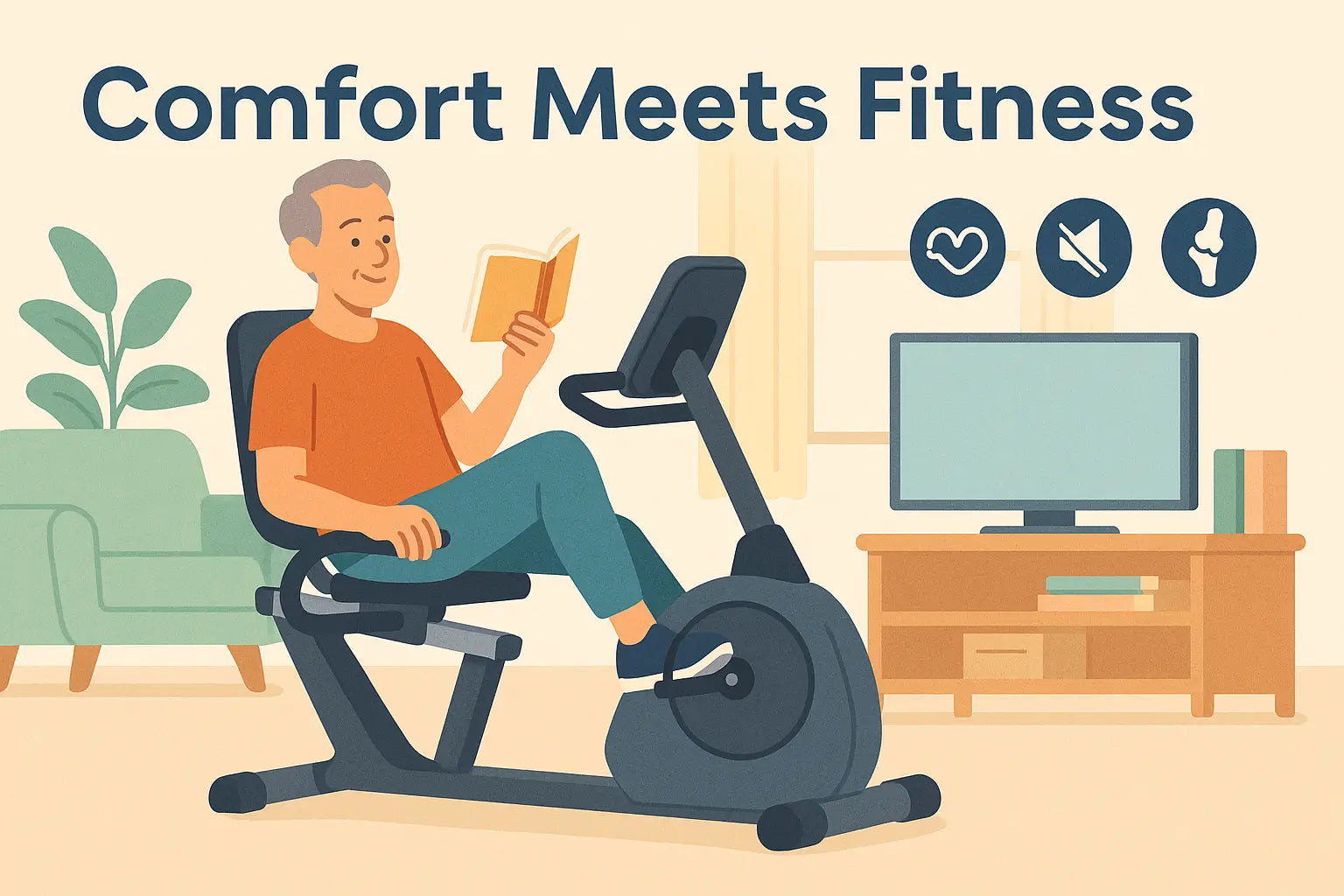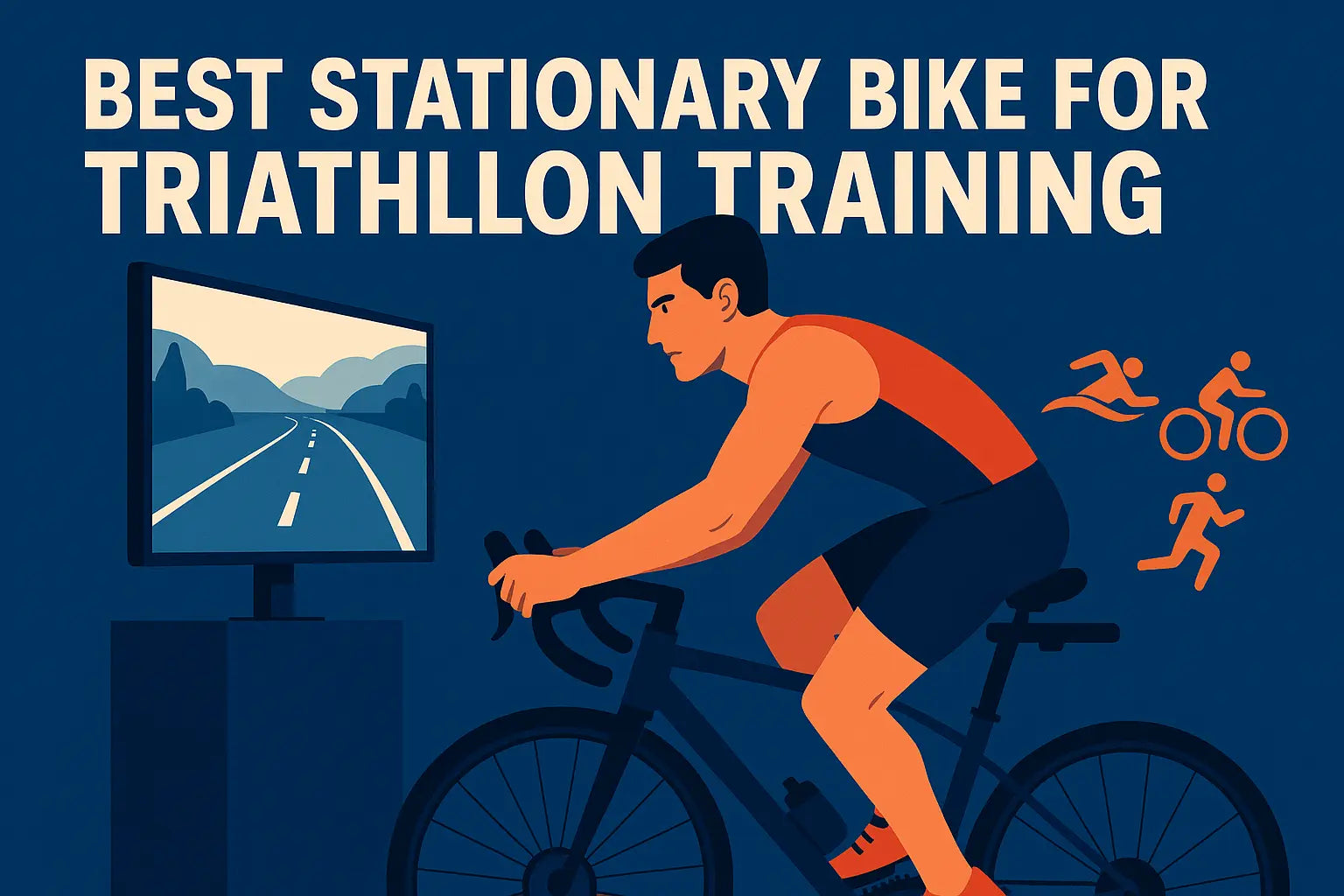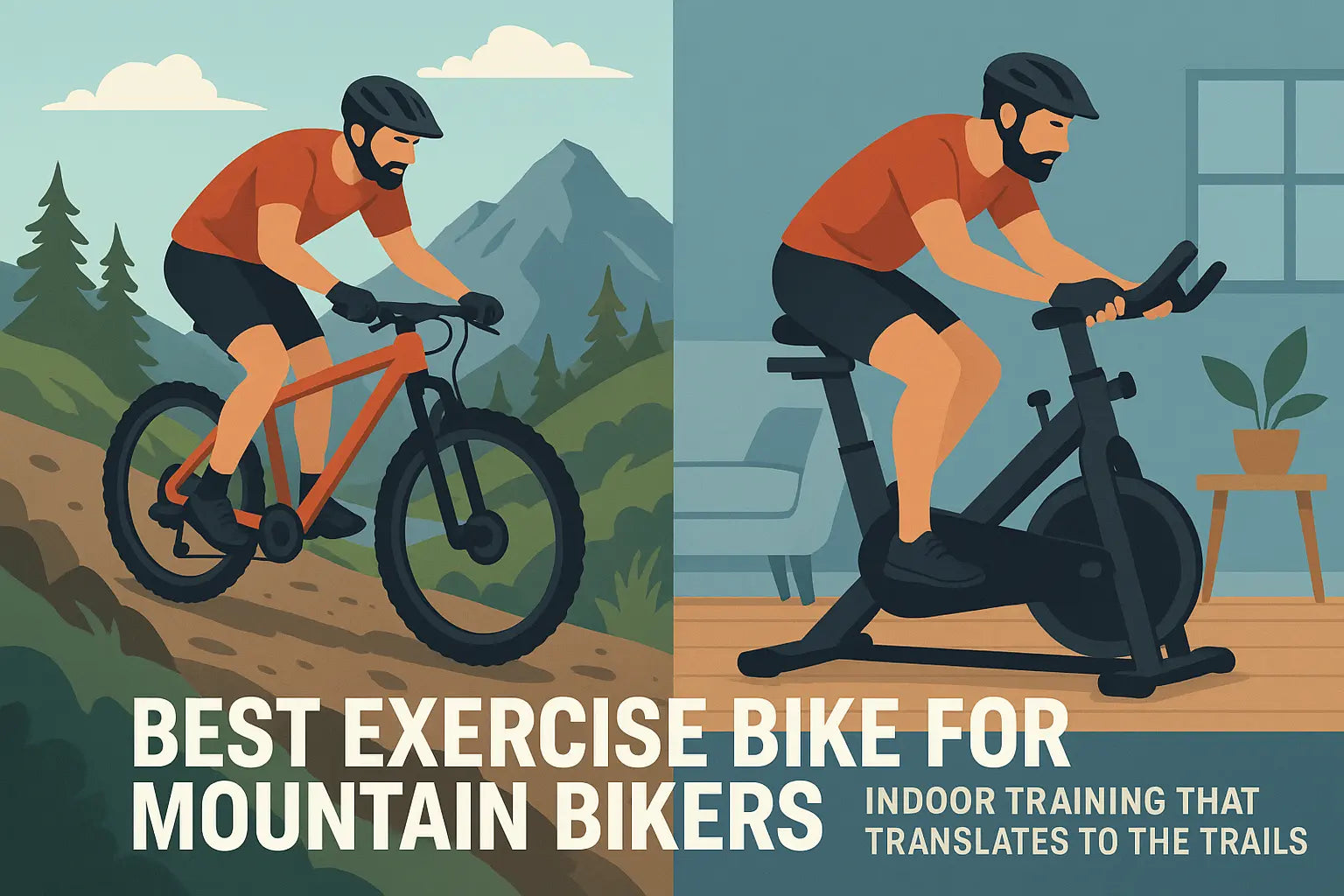Triathlon is one of the most demanding endurance sports, combining swimming, cycling, and running into a single grueling event. To succeed, athletes must build a balance of cardiovascular endurance, muscular strength, and mental resilience. Among the three disciplines, cycling is the longest segment, often making up half of the race duration. That’s why dedicated cycling training is essential for any triathlete. However, not everyone can train outdoors year-round—bad weather, limited daylight, and busy schedules often get in the way. This is where a stationary bike becomes an invaluable training tool. A stationary bike can also be a key part of a triathlete's fitness journey, supporting personal health and performance goals when outdoor sessions aren't possible.
But with so many options available—spin bikes, upright exercise bikes, recumbent bikes, and smart trainers—choosing the right one can feel overwhelming. While outdoor training and riding outdoors are ideal for developing real-world cycling skills, indoor options like stationary bikes are essential for maintaining consistency and progress when conditions aren't suitable for outdoor rides. This article will help you understand what makes a stationary bike ideal for triathlon training, compare the different types, and offer practical tips for getting the most out of your indoor sessions.
The Demands of Triathlon Cycling
Cycling in triathlon is not just about riding for long distances—it requires strategic energy management, powerful bursts of effort, and seamless transitions to running, as emphasized by the Sports (Walsh, 2019) [1] in its analysis of triathlon performance demands.
Key training needs for triathletes include:
-
Endurance: Long rides at a steady pace to build aerobic capacity.
-
Power and Intervals: Short, high-intensity efforts that simulate hills, sprints, and race surges, including using higher resistance to mimic climbing steep hills.
-
Posture and Muscle Engagement: A forward-leaning position similar to road bikes to train the same muscle groups used in competition.
-
Low-Impact Recovery: Gentle rides that promote blood flow and aid in muscle repair after intense workouts.
-
Data Tracking: Heart rate, cadence, and power metrics are essential for structured training and monitoring progress.
Outdoor riding introduces variables like traffic lights, terrain changes, and natural resistance, which are important for realistic training and skill development compared to indoor sessions.
Training for a sprint triathlon may require a different emphasis on speed and intensity compared to longer events.
Types of Stationary Bikes for Triathlon Training
Not all stationary bikes are created equal. There is a wide variety of indoor bikes available, ranging from basic models that offer affordable entry-level options to advanced smart trainers with features like resistance variability and connectivity. Some prioritize comfort, while others focus on simulating outdoor conditions. Choosing the best exercise bike depends on your individual needs and training goals. Let’s break down the main options triathletes typically consider.
Spin Bikes
Spin bikes are designed to mimic the geometry and feel of road bikes. They have a fixed flywheel, adjustable resistance, and a forward-leaning riding position.
Pros:
-
Closely simulates outdoor cycling posture.
-
Ideal for interval training and high-resistance workouts.
-
Commonly used in spin class settings for intense workouts, providing a motivating group or virtual experience.
-
Affordable compared to smart trainers.
Cons:
-
Resistance is typically adjusted manually, which may not be as precise as a power-based trainer or electronic system.
-
Lacks integrated smart features unless upgraded with sensors.
Best for: Triathletes who want a realistic road-like experience at a lower cost.
Upright Exercise Bikes
Upright bikes provide a comfortable yet athletic riding position. They typically come with built-in monitors to track time, distance, and sometimes wattage.
Pros:
-
Stable, durable, and easy to use.
-
Many models include heart rate monitoring and basic training programs.
-
Good for long endurance rides.
-
Magnetic resistance is common, offering smooth and quiet operation.
-
Many upright bikes allow adjustment of handlebar height and seat position for a customized fit.
-
Upright bikes often specify a max rider weight, which is important for user safety and accommodating a range of users.
Cons:
-
May not perfectly replicate road bike geometry.
-
Less effective for simulating aggressive race positions.
Best for: Athletes who want a balance between comfort and structured training.
Smart Bike Trainers
You can use your own bike—including a road bike, tri bike, or tt bike—on an indoor trainer or electronic trainers. Mounting your bike on a trainer closely mimics the feel of a real bike or actual bike, providing a more authentic indoor cycling experience. Smart trainers connect to virtual training platforms like Zwift or TrainerRoad, and can also be integrated with various training apps. They provide accurate power measurement, simulate gradients, and control resistance automatically, enabling features like Zwift rides and structured workouts.
Pros:
-
Most accurate in terms of power measurement and road feel.
-
Accurate power measurement and ability to control resistance automatically.
-
Can simulate outdoor race conditions, including climbs.
-
Works seamlessly with structured training plans.
-
Connects to training platforms and training apps for interactive features like Zwift rides.
Cons:
-
Higher cost compared to spin or upright bikes.
-
Requires owning a compatible bike.
Best for: Serious triathletes who want precise, race-specific training indoors.
Recumbent Bikes
Recumbent bikes place the rider in a reclined position with back support. While they are not ideal for simulating race conditions, they are excellent for recovery and cross-training.
Pros:
-
Extremely comfortable with less strain on the back and joints.
-
Great for recovery days or injured athletes.
-
Encourages consistent low-impact cardio.
-
Typically provides a quiet ride, making them suitable for home use.
Cons:
-
Very different from road cycling position.
-
Not suitable for serious triathlon-specific training.
-
May not offer as much resistance as other types of bikes, limiting workout intensity.
Best for: Recovery rides or athletes dealing with injuries.
Related Page: Best Recumbent Exercise Bikes For Home Gyms
Comparison Table
|
Bike Type |
Pros |
Cons |
Best For |
|---|---|---|---|
|
Spin Bike |
Road-like posture, interval-friendly, affordable, steel frame construction for durability |
Less precise power data |
Intermediate triathletes |
|
Upright Bike |
Stable, comfortable, built-in programs, commonly found as gym bikes |
Not as aggressive posture |
Balanced training & endurance |
|
Smart Trainer |
Accurate power, gradient simulation, structured plans, participate in group rides, virtual classes, and live spin classes |
Expensive, requires road bike |
Serious competitors |
|
Recumbent Bike |
Comfortable, joint-friendly, great for recovery |
Not race-specific |
Recovery and rehab |
Choosing the Best Bike for Your Needs
When deciding on the best stationary bike, triathletes should consider their specific goals, budget, and training style. The choice of exercise bike depends on factors such as your budget, training needs, and whether you plan to ride indoors exclusively or also train outdoors. There are basic models that are affordable and suitable for beginners, as well as high-end options with advanced features when selecting the best exercise bike. Some athletes may even use a mountain bike on a trainer for indoor riding, though this setup may not perfectly replicate real-world road conditions. Ask yourself the following questions:
-
Do I need precise power metrics? If yes, a smart trainer is best.
-
Do I want a realistic road bike feel? Spin bikes are the closest match without the high cost.
-
Am I training for long endurance rides? Upright bikes are comfortable and stable for longer sessions.
-
Do I need a recovery option? Recumbent bikes can complement harder training days.
In most cases, triathletes will benefit from having either a smart trainer or a spin bike as their primary tool to bike indoors, with the option of an upright or recumbent bike for variety and recovery. Indoor riding with these setups allows for structured training and consistent workouts regardless of weather.
Indoor Training Workouts for Triathletes
Once you’ve chosen your bike, the next step is to use it effectively. To create a well-rounded triathlon training program, consider incorporating strength training routines and using gym equipment such as treadmills, stationary bikes, and other essential gear to complement your indoor cycling.
Here are some structured workouts tailored for triathlon preparation:
1. Endurance Base Ride
-
Duration: 60–90 minutes
-
Intensity: Zone 2 (60–70% of max HR)
-
Purpose: Build aerobic fitness and fat utilization.
2. Interval Power Session
-
Warm-up: 10 minutes
-
Main Set: 6 x 3 minutes at Zone 4 (threshold), with 2 minutes rest between.
-
Cool-down: 10 minutes
-
Purpose: Increase lactate threshold and race power.
3. Climbing Simulation
-
Duration: 45–60 minutes
-
Work: Alternate 5 minutes at low cadence (60 rpm) high resistance, then 5 minutes at high cadence (90 rpm).
-
Purpose: Build leg strength and muscular endurance.
4. Brick Workout
-
Bike: 40 minutes at race pace intensity.
-
Transition: Immediate run for 10–20 minutes.
-
Purpose: Adapt to the bike-to-run transition.
Source: Adapt to the bike-to-run transition, a method endorsed by USA Triathlon [2], which highlights brick workouts as a key component of triathlon-specific training.
Tips for Effective Indoor Triathlon Training
-
Use a Fan: Prevent overheating during long rides.
-
Hydrate: Indoor training leads to higher sweat rates.
-
Invest in a Mat: Protects your floor and reduces noise.
-
Track Metrics: Heart rate monitors and power meters give valuable feedback.
-
Adjust Saddle Height: Set your saddle height for optimal comfort and performance. Proper adjustment helps prevent injury and mimics the feel of a regular bike.
-
Increase Resistance: Periodically add more resistance to your workout. This helps build strength and simulates outdoor challenges by using features like brake pad friction, electromagnetic braking, or air drag systems.
-
Train on a Regular Bike: Occasionally ride a regular bike outdoors to complement your indoor sessions. This helps develop different skills and adapts you to real-world riding conditions.
-
Stay Consistent: Even short rides can make a difference if done regularly.
Conclusion
For triathletes, indoor cycling is not just a backup option for bad weather—it’s a critical part of structured training. The best stationary bike for triathlon training is a smart trainer that uses your own bike, tracks power accurately, and mimics real race conditions. And you can also consider other options:
-
Choose a smart trainer for precision and race simulation.
-
Opt for a spin bike for a cost-effective, road-like experience.
-
Use an upright bike for comfortable endurance rides.
-
Add a recumbent bike for recovery and injury management.
No matter which option you choose, the key is to align your indoor training with the unique demands of triathlon. Indoor cycling can play a crucial role in preparing for your first race, helping you build confidence and refine your strategy. It also supports your overall fitness journey by allowing you to track progress and stay motivated as you work toward your personal health and performance goals. By combining endurance rides, power intervals, climbing simulations, and brick workouts, you’ll be well-prepared to conquer the cycling leg—and transition smoothly into the run—on race day.
With the right stationary bike and a smart training plan, your living room can become a powerful triathlon training ground. Stay consistent, track your progress, and you’ll see the results pay off when it matters most: on the course.
Reference
- Walsh, J. A. (2019). The rise of elite short-course triathlon re-emphasises the necessity to transition efficiently from cycling to running. Sports, 7(5), 99. https://doi.org/10.3390/sports7050099
- USA Triathlon. (n.d.). What do I do on the bike? USA Triathlon. Retrieved August 19, 2025, from https://www.usatriathlon.org/training-tips/what-do-i-do-on-the-bike-
Latest Articles







